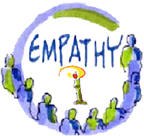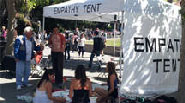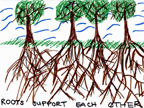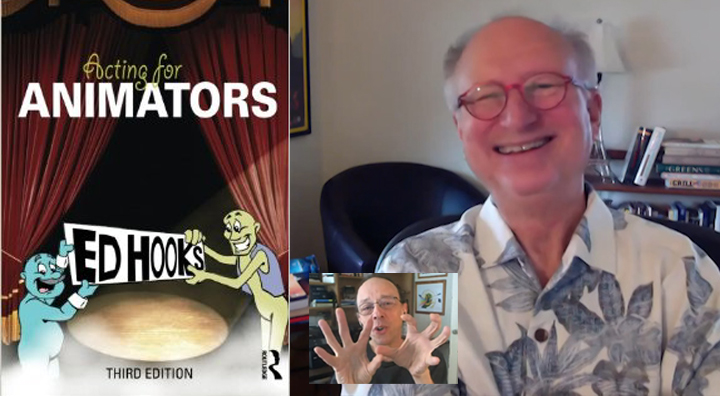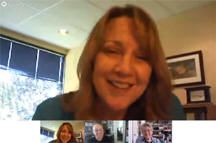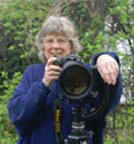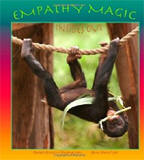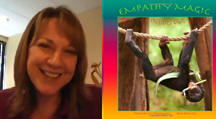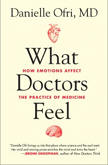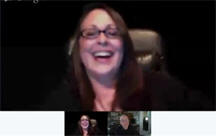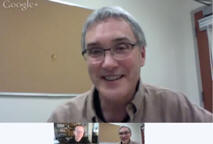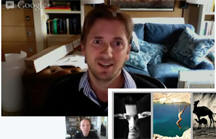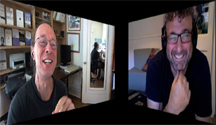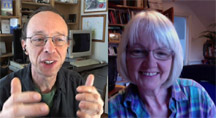|
|
|
Conference
- Panels
-
Possible Panels
- Facebook
Event -
Education -
Volunteer - [Planning]
Sub Conference: Arts
http://j.mp/KYoDn2
Empathy for Actors
and Animators
Ed Hooks has been an entertainment industry professional
for more than three decades. He has appeared in more than 100 television
programs and films and is one of the most respected acting teachers in the
United States. Since 1996, Professor Hooks created acting training
specifically for animators, and his system is used by leading animation
schools internationally.
Performance animation is all about empathy,
A
projecting praxinoscope,
Wikipedia
"Performance animation is all about empathy, and we discuss it extensively
in every class I teach. The word "empathy" is the English translation of
the German "Einfuhlung", which means "to project yourself into what you
observe", and it did not appear in the English language until the 1920's.
The word "sympathy" has been in use far longer, and that is why the two
are at times erroneously considered interchangeable.
Fear, Creativity and Empathy with Anne Paris, Marian
Brickner, Edwin Rutsch
Marian
Brickner is an Animal Photographer. "Marian has a rare gift, which
takes remarkable skills of empathy, communication and visual art along with
a high level of technique."
In this discussion we talked about the relationship of Fear,
Creativity and Empathy. Anne writes, "My ultimate goal is to help you
increase your self-empathy and stir you curiosity about how artistic blocks
are understandable and reasonable responses to your past experiences, your
present fears and your assumptions about your future... Through
empathic encounters, immersive connections can ultimately diminish feelings
of aloneness while strengthening the persons core... I believe one of your
major tasks in moving through the creative process is finding a way to be
more empathic with your own experience. "
Anne Paris: How to Build a Culture of Empathy
with Children's Books
Anne Paris, PhD, author of
Standing at Water's Edge:
Moving Past Fear, Blocks, and Pitfalls to Discover the Power of Creative
Immersion, is a clinical psychologist in private
practice in Cincinnati, Ohio. She has practiced psychotherapy for over 25
years, and has specialized in working with artists, trauma victims,
couples, and parents.
Also, Anne is coauthor (text) with Marian
Brickner (photography) of
Empathy Magic: Insides Out..
A new book that is a fun and whimsical way to introduce young children to
EMPATHY. Stunning photographs of bonobo apes illustrate what empathy is,
and how empathy helps build good relationships with family and friends.
Cute, fun, and engaging. A wonderful tool to help facilitate social skills
development, as well as to prevent later problems such as bullying, school
violence, and depression. Geared towards children aged 3-7.
Danielle
Ofri and Edwin Rutsch: How to Transform Medicine with Empathy and Stories
Danielle is co-founder and Editor-in-Chief of
the Bellevue Literary Review, the
first literary journal to arise from a medical setting.
Danielle's newest book -
What Doctors
Feel: How Emotions Affect the Practice of Medicine – explores the
hidden emotional world of the doctor, and how this impacts the medical
care that patients receive every day.
She writes, "It’s no wonder that the third year of medical
school figures prominently in studies that document decline of empathy
and moral reasoning in medical trainees... the erosion of empathy, for
example, may have long-reaching consequences. Patients of doctors who
score lower on tests that measure empathy appear to have worse clinical
outcomes. Diabetic patients, for instance, have worse control of their
blood sugar and cholesterol. Cancer patients seem to experience more
depression. Medication compliance diminishes. Even the common cold can
last longer."
Diana Castle:
How to Build a Culture of Empathy with Acting and Imagination
Diana Castle is a first generation American born of a
holocaust survivor. She attended a fine arts high school before graduating
with a BFA in theatre with a music minor. She began her career in both
musicals and dramatic roles in NYC, in national tours and regional theatre,
as well as on stages internationally. "Diana
Castle’s THE IMAGINED LIFE™ – Acting As The Art of The Empathetic
Imagination- is a creative philosophy and practical application of your
natural empathetic imagination to the art of acting...
Diana works with actors, singers, writers and directors of
diverse backgrounds from all over the world in an effort to illuminate an
experience of alternative perspectives, facilitate catharsis and create
community through her creative philosophy and the empathetic imagined life
experience."
We had a fun, dynamic and almost 2 hour discussion about the
nature of empathy and how to embody it through acting. We explored how to
not just talk about empathy, but embody it.
Ron MacLean is author of the novels Headlong and Blue
Winnetka Skies and the story collection Why
the Long Face? His fiction has appeared in GQ, Fiction International,
Best Online Fiction 2010, and elsewhere.
He is a recipient of the Frederick Exley Award for Short
Fiction and a multiple Pushcart Prize nominee. He teaches at Grub Street in
Boston.
Ron wrote the article:
Is
Fiction Empathy’s Best Hope? We discussed his article and the
relationship of empathy and fiction writing. "What I do care about
is the loss of our ability to identify with others. Empathy is a muscle
that must be exercised lest it atrophy. It’s a seed that must be
cultivated in order to grow—to live. And in a sped-up society in which
connection is increasingly fleeting and often virtual, we can’t take
empathy for granted anymore.....
It’s paradoxical, even absurd—this idea that made-up
stories can develop in us an essential human quality. The idea that
reading about people who don’t exist could expand our capacity to care
about, and act on behalf of, people who do. But it’s true."
George Lewis and Edwin Rutsch: Dialogs on How to Build a Culture of Empathy
with Photography
George Lewis is a photographer exploring the nature of
empathy. He says, "For me, one of the greatest challenges of the 21st
century is to make people more visible to one another, to find ways for
people to engage, empathize, and learn of each other’s deepest values and
concerns. We need to lay the foundations for a new global human identity,
one that transcends differences and is predicated on mutual understanding
and respect, celebrating the beauty of difference. In short my art is all
about Empathy. "
Alex Gabbay
& Edwin Rutsch: How to Build a Culture of Empathy with Movies
Alex Gabbay is a Filmmaker and Director.
His
documentary,
'Love
Hate and Everything in Between' is about empathy and looks
into the world of neuroscience, psychology, education and technology to
explore the extraordinary relevance of empathy in today’s increasingly
interconnected world.
Man’s capacity for kindness and compassion is overshadowed
only by his ability to be as cruel and destructive. Can empathy resolve
issues of aggression and subjugation, where wars, politics and economic
sanctions have failed? Empathy – a
subject increasingly tested by world events and studied by scholars –
is put under the microscope in this documentary. Alex and Edwin have a
wide ranging discussion about the nature of empathy and his
suggestions for building a culture of empathy.
Dee
Reynolds: How to Build a Culture of Empathy with
Kinesthetic Empathy
Dee
is editor/author of,
among other books, Kinesthetic
Empathy in Creative and Cultural Practices.
A
key interdisciplinary concept in our understanding of social interaction
across creative and
cultural practices, kinesthetic empathy describes the ability to
experience empathy merely by observing the movements of another human
being. Dee is a founder of the 'Watching Dance: Kinesthetic
Empathy' project that uses audience research and neuroscience to explore
how dance spectators respond to and identify with dance. It is a
multidisciplinary project, involving collaboration across organizations
and four institutions. The project has a website, Ning group and held a
conference.
Lynn
Johnson This panel of guest artists
from the fields of dance, music, theater, and design, shared their
personal insights of how empathy plays a vital part in their
various art forms. The artists also outlined how they would make
empathy front and center in our culture through their art form.
Tal-Chen Rabinowitch & Edwin Rutsch: How to Build a Culture
of Empathy with Music Arts Empathy, compassion, living by the
golden rule, all of those things are so critical to, not only to
your own personal happiness, but to the sustainability of our
societies and of the human race. So empathy is, I think, one of the
core ingredients, not only for a happy life, but of a happy world.
Eva
Vigran: Dialogs on How to Build a Culture of Empathy with
Dance Empathy is like
water, it flows and takes any shape. The opposite of empathy is like cold
hard ice. In the dance we begin
with self-empathy, by feeling into ourselves,
melting the stress points, finding out what is going on
in our bodies. We get away from the words and can feel
our breath and gravity. We can then start to feel and
empathize with others. Our drop of water merges with others and we become
a third body.
Rhonda Morton: Dialogs on How to Build a Culture of Empathy
with the Arts
If we use the body data, and our body knowledge,
and our body wisdom to increase that connection, to increase that
empathy, decrease the violence, we can have world peace....
So please join me, become an Empathy Ambassador too.
Lynn Johnson & Edwin Rutsch:
Dialogs on How to Build a Culture of Empathy with Arts Education
Lynn Johnson is CEO of Glitter & Razz Productions and
theater artist dedicated to building strong connections with creative &
compassionate people to bring about positive social change.
Using the expressive arts and theater to promote and teach
empathy to children and adults. We believe that play lights us up and
connects us. We believe that compassion is a skill that can be taught and
practiced.
Dan Roberts:
Dialogs on How to Build a Culture of Empathy with Clowns Red
Nose Foundation provides children with a place to learn and play
together, no matter one’s race, religion or economic standing.
Through the structured study of physical arts (circus), the children
learn that a success is celebrated as a team, and a failure is to be
challenged together. Red Nose Foundation uses a three-step model
to support the development of empathy in our students and to teach them
skills to build and reach their dreams. The first stage is pure arts
exploration. The program was one of winners of the
Activating
Empathy competition. Acting
JAMES LIPTON'S MOST VALUABLE ACTING INSIGHTS
James Lipton, creator and host of "Inside the Actors Studio",
talks about which acting insights he has found most valuable
Methods for acting
1. Memories.
Simply remembering what was the time of day, was it night, was it
day. Was it outside, was it inside. It was inside. Do you remember the room? Was
the room warm? Cold? Can you see the wallpaper, or the paint, etc. Refining and
defining and recalling in the most intimate detail the experience. Not
necessarily aloud, but in one’s own recollection. Usually
under the guidance of a director and what happens is that when you reach a
certain point in that
exercise of affective memory, emotional memory, you begin to relive it so
vividly that whatever
emotions you had at the time come flooding back. " Stanislavski stopped using this method.
"Stanislavski said for that very reason, and instead I am
interested in what the character wants at any given
moment. “In the given circumstances you must be rooted in the play. Do not
depart from the
play. Don’t cut yourself off from your partner in the scene, or partners. Don’t
go so deep in
yourself that you no longer exist for your partner and for the character and for
the play, said
Stanislavski, and said Stella. You must be so thoroughly immersed in the given
circumstances of
the play, then you decide what it is at any given moment what that the actor
wants. And when
you try to achieve what that actor wants, as ardently, as the character wants, I
should say, when
you try to achieve it, the emotions will come
3. Listening
"And then I would add to that the fact that all of these great
teachers,
Strasberg, Stella, Meisner, Lewis, Clurman, all of them, they emphasize
listening.
Now, you’re listening to me, right? When you speak to me, I am listening to you.
In life we
listen to other people. Listen with varying degrees of concentration and
attention, right?
Actors
must learn to listen in a different way. Alan Alda, who really understands these
things very well,
I think, on our stage Inside the Actor’s Studio, said, the way to understand
listening, the act and
art of listening is the following.
If what you hear changes you in any way,
you’ve heard it, you
listened. If it doesn’t, and we all listen, we listen all the time in our lives,
we’re listening to
television, we’re listening to our mates at dinner, we’re listening to the
traffic in the street, we
listen, but this is a different kind of listening.
This is a listening that is
so acute that is so focused
and concentrated that if the other person, the other actor says, I have some
very bad news for
you, your mother has died, it really hits."..
"I often ask our guests, we’ve had 250 of them in 16 years on
Inside the Actor’s Studio and of our
school. What’s the single most important thing that you would tell an actor?
Listen. Listen. But
it’s that particular kind of listening of which an actor becomes capable in
time, it doesn’t happen
in a day."
===========================
Meryl Streep discusses the role of Empathy in her life
and acting |
|
||||||||||||||||||||||||||||||||||||||||||||||||||||||||||||||||||||||||||||||||||||||||||||||||||||||||||||||||||||||||||||||||||||||||||||||||||||||||||||||||||||||||||||||||||||||||||||||||||||||||||||||||||||||||||||||||||||||||||||||||||
|
||||
